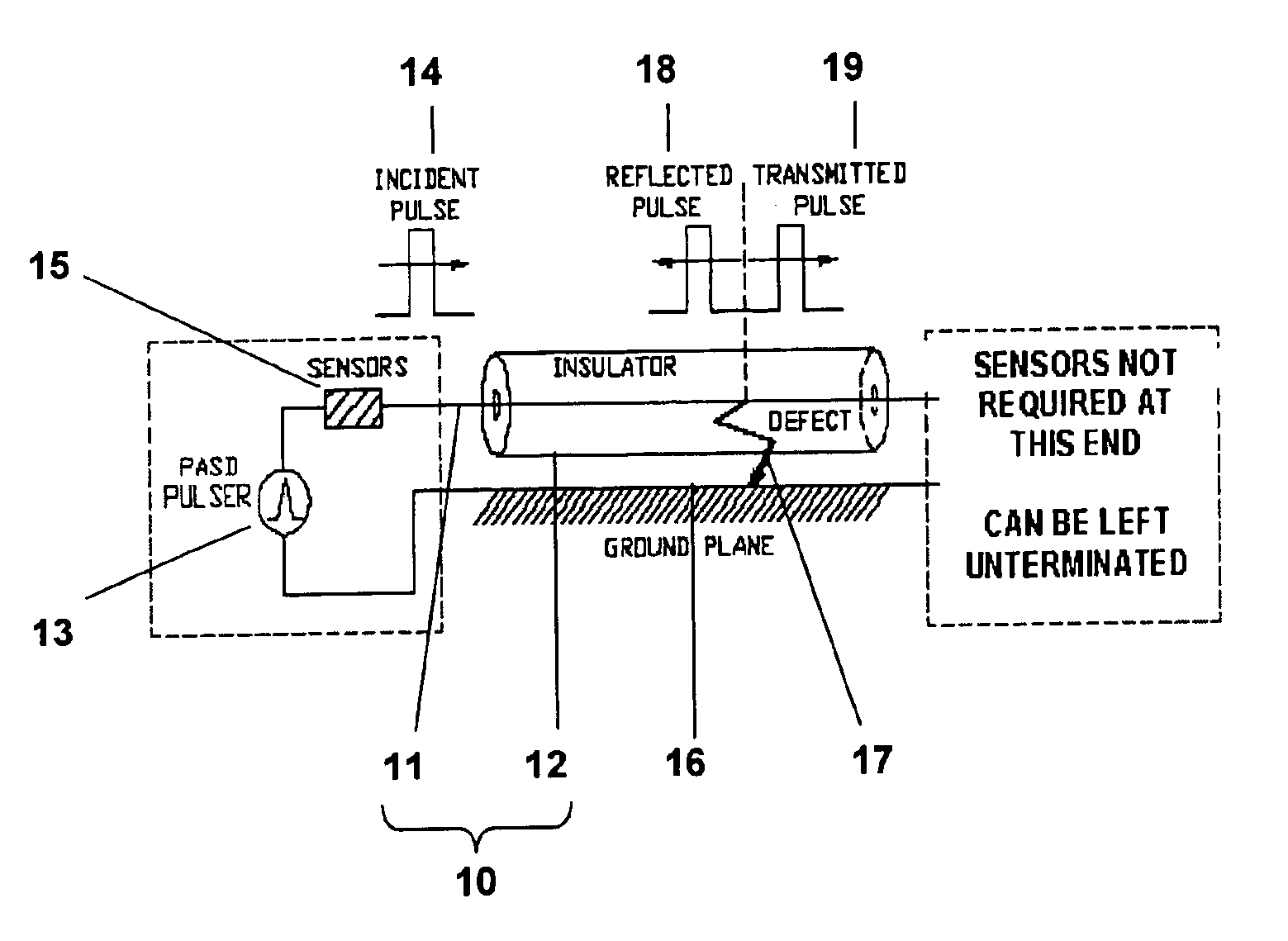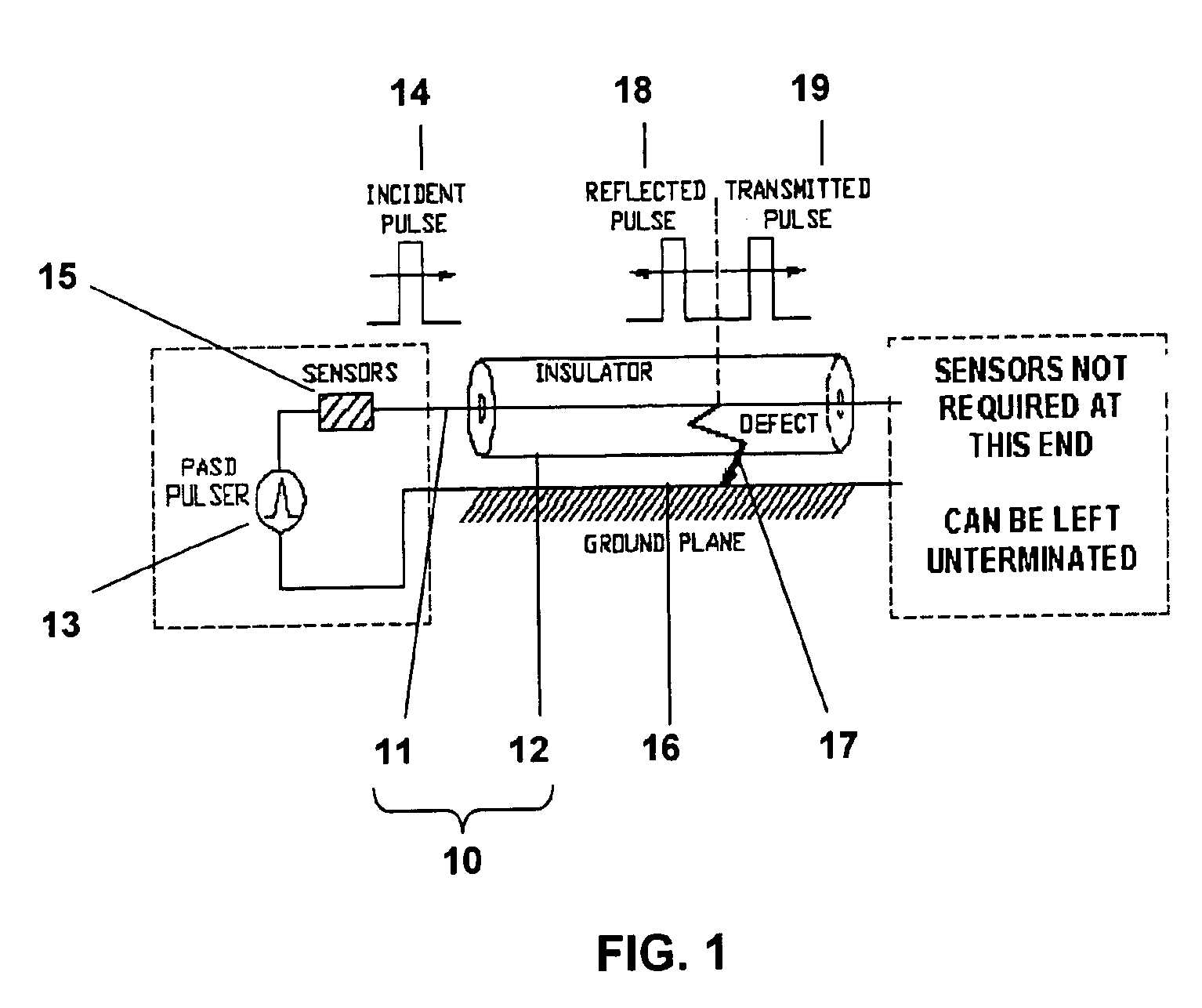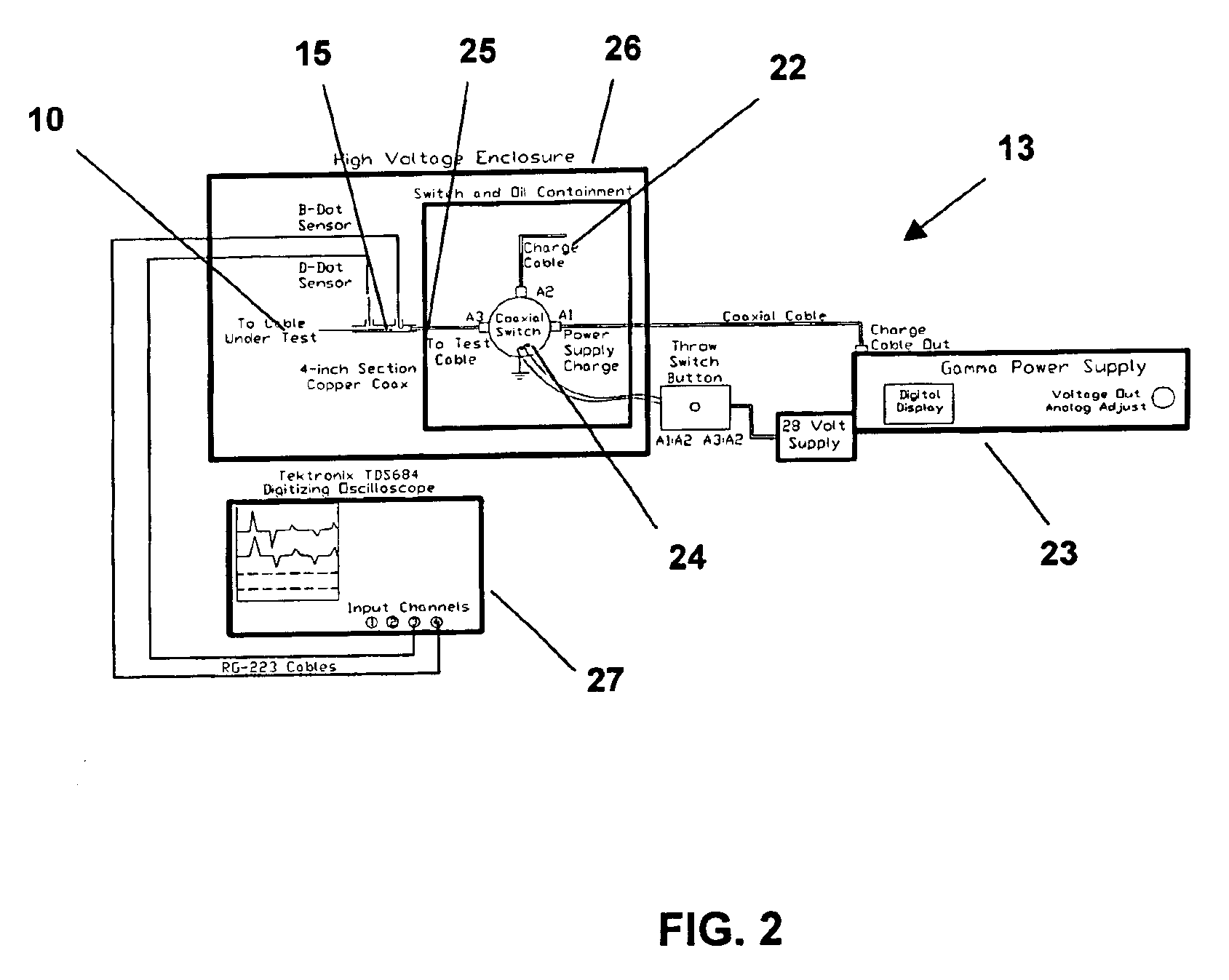Method and apparatus for electrical cable testing by pulse-arrested spark discharge
a technology of electrical cable and spark discharge, which is applied in the direction of resistance/reactance/impedence, line-transmission details, instruments, etc., can solve the problems of immediate failure, accumulation of damage to the cable, cracking of insulation in the control cable, etc., to reduce the breakdown voltage, enhance or inhibit the onset of electrical breakdown, and reduce the effect of voltag
- Summary
- Abstract
- Description
- Claims
- Application Information
AI Technical Summary
Benefits of technology
Problems solved by technology
Method used
Image
Examples
examples
The charge-line pulser 13 shown in FIG. 2 was used to test representative end-of-life-cycle commercial and military aircraft cable assemblies using the PASD method described above. Table 1 describes the cables that were tested. Cable types tested included coaxial, twisted pair, and four-conductor cable with various types of damage developed during the life cycle of these aircraft cables.
TABLE 1Cable descriptionCable TypeManufacturerSpecificationsDefectRG-174 / UBrand-Rex50-ohm coax360° Break in shieldRG-214 / UDelco50-ohm coaxAbrasionP / N 2473Alpha62-ohmAbrasiontwisted pairP / N 1772Alpha44-ohm fourAbrasionconductorRG-214 / UDelco50-ohm coax1.2 mm pin in shieldRG-214 / UDelco50-ohm coax1 mm hole without pinP / N M3232Manhattan CDNonuniformAbrasiontwisted pair
Table 2 summarizes the damaged cable detection thresholds for the cables tested. The detection threshold is the incident pulse voltage at which a breakdown-induced reflected pulse having a detectable waveform damage signature is first observ...
PUM
 Login to View More
Login to View More Abstract
Description
Claims
Application Information
 Login to View More
Login to View More - R&D
- Intellectual Property
- Life Sciences
- Materials
- Tech Scout
- Unparalleled Data Quality
- Higher Quality Content
- 60% Fewer Hallucinations
Browse by: Latest US Patents, China's latest patents, Technical Efficacy Thesaurus, Application Domain, Technology Topic, Popular Technical Reports.
© 2025 PatSnap. All rights reserved.Legal|Privacy policy|Modern Slavery Act Transparency Statement|Sitemap|About US| Contact US: help@patsnap.com



